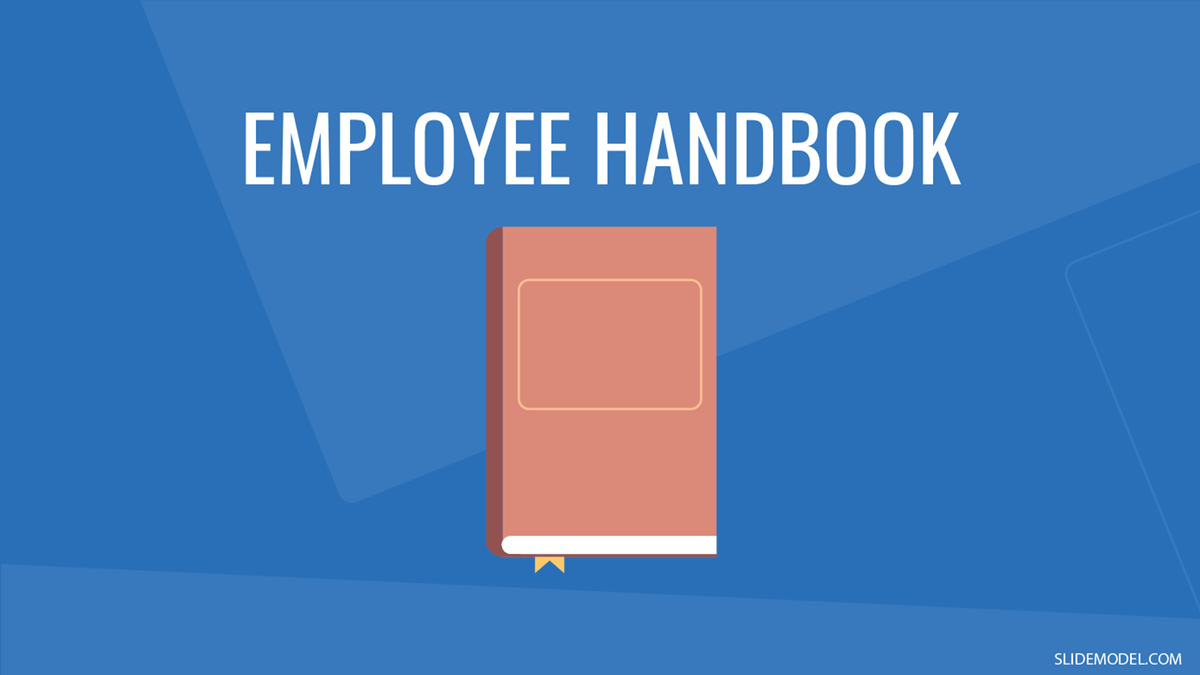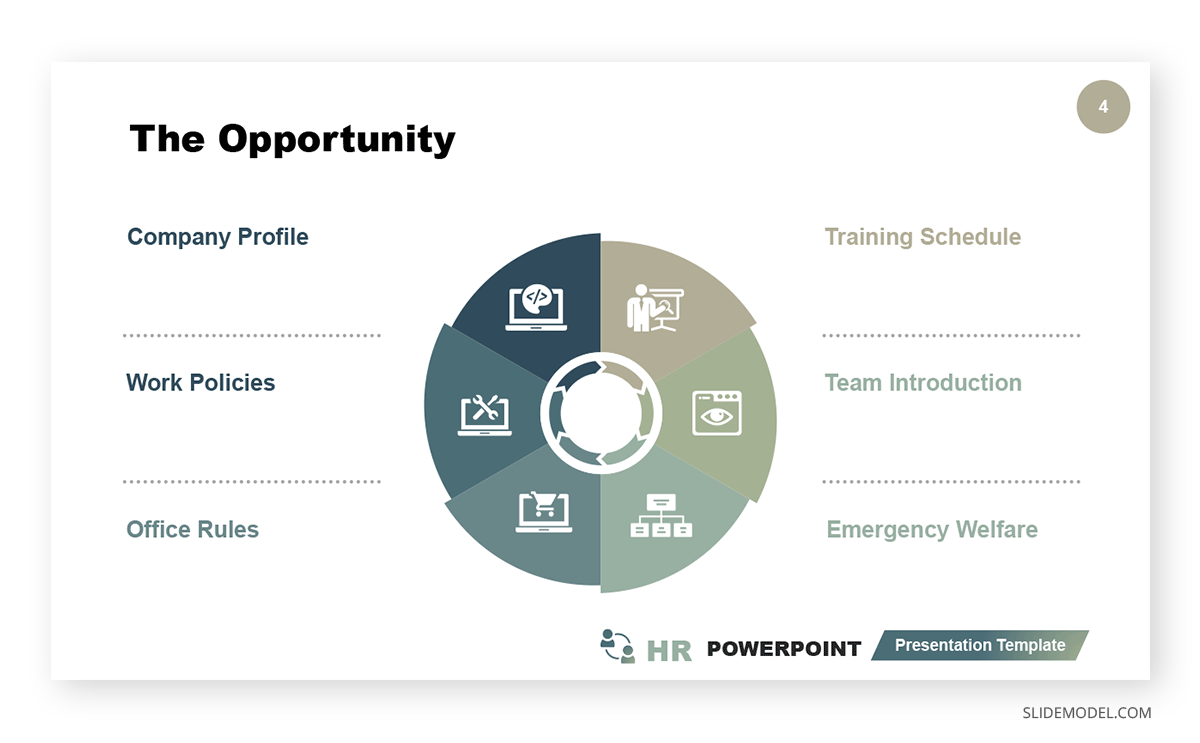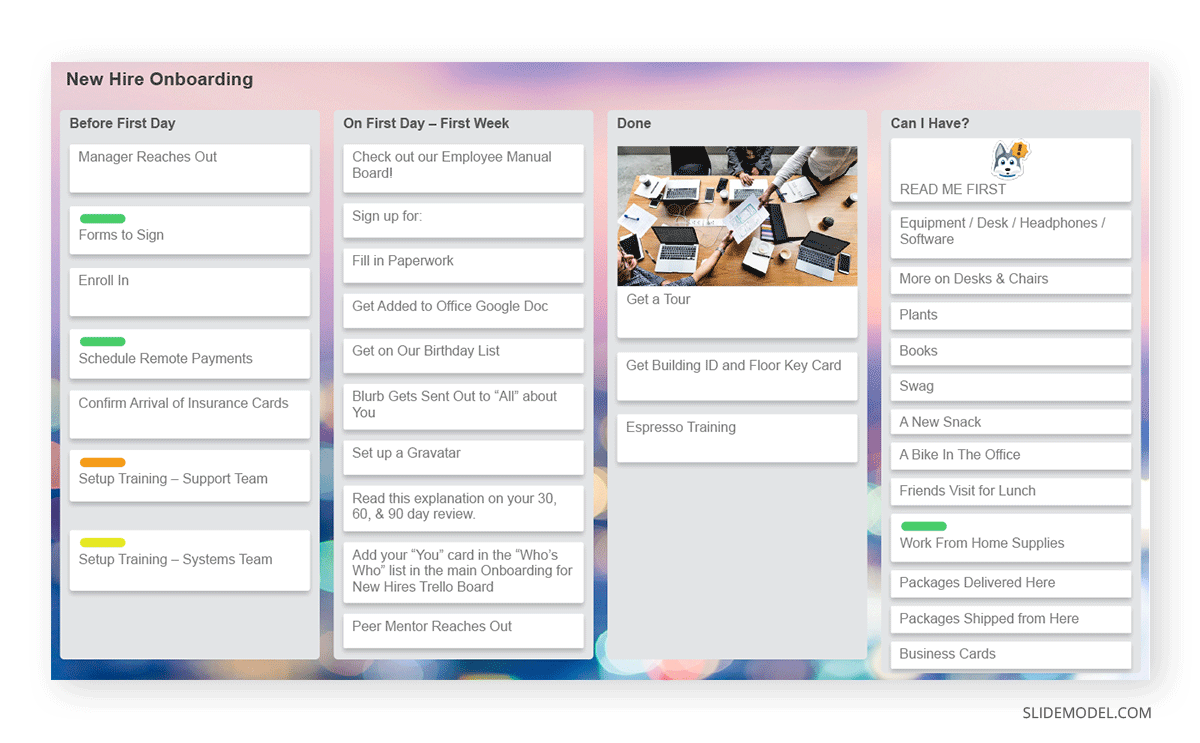
How many employee handbooks have you read all the way through during your career? If you’re like half of millennials and even a third of Baby Boomers, you probably haven’t read most of the employee handbooks you’ve been handed over the years.
This is actually a very common problem businesses have been seeing over the last several decades. On one side, a lot of employees see the employee handbook as simply a hoop to jump through when starting a new job, despite the important information it contains. On the other side, companies could definitely improve the way they make and present their employee handbooks to encourage new hires to read them.
What Is an Employee Handbook?
Traditionally, an employee handbook is a document containing the basic information about a company, behavior guide, legal policies, working procedures, and employee benefits.
Nowadays, with access to the technology that we have, employers have a variety of formats available to them for presenting their employee handbooks. There is the classic binder and printouts, the PDF document, PPT presentations, and software where you can upload each piece of information necessary.
Why Make an Employee Handbook?
There are two main reasons to make an employee handbook. There’s the legal reason and the practical reason.
Legally, employers are required to inform their employees about certain company policies. These vary, depending on the country and state where your company has hired its employees. When preparing which policies to add to your employee handbook, make sure to research for your state, which policies you are legally required to communicate to employees. While you can comply with the law about making these policies known to your employees in any way you want, adding them to the employee handbook is a very convenient option.
As for the practical reason, the employee handbook is one of your opportunities to communicate with your employees. It’s not just about rules and procedures, but about who your company is and where the employee fits into the grand scheme of things. Communicating the culture and values of your company are why it’s so important to put time and effort into crafting a great employee handbook that people will actually read.
When Is It Necessary to Make an Employee Handbook?
Most HR departments and managers present employee handbooks during new hire onboarding processes. You’ll want to make sure your new employees understand the dynamics and policies active in the organization. This document is kept on hand for reference, whenever doubts arise about procedures like requesting time off or dealing with a conflict. If you update anything significant in the handbook, you’ll need to distribute it again to all employees to make sure they’re aware of the changes.
Why Does it Matter if Employees Read their Employee Handbook?
Apart from ensuring your company complies with legal policy, you should care about whether employees read their handbook for three main reasons.
First, you want your employees to understand the kind of culture and values you want to cultivate at your organization. If new hires aren’t getting their information about the company from you, then you can’t ensure it is accurate.
Second, there are so many questions that employees ask during the onboarding process and for months after, as they get used to their new role. A lot of these questions can be answered in the employee handbook. If new staff read and understand the handbook, then they can feel more prepared to move forward with their position.
Third, your employees need to trust you and, more importantly, you need to earn their trust. The employee handbook may seem like a small hurdle, but it’s one of the first tests for both you and your employee. Will they do what you ask? Will you waste their time? You can’t control what your new hires will do, but you can make sure you give them a valuable document that is worth their time to read and understand.
Check out this handy presentation template for introducing your employee handbook:

What Should the Employee Handbook Include?
What you include in your employee handbook will depend on your organization, industry, and kinds of employees you’re hiring. That being said, here’s a list of subjects that HR departments commonly add to employee handbooks. You can evaluate each and decide what to add when making your own.
1. Company History, Mission, Vision, and Values
This is a great way to start your employee handbook. So often the mission, vision, and values are seen by employees as very abstract. By working them into the very beginning of the handbook, you can make sure your employees understand what’s at the core of your organization.
Here’s an employee handbook template for presenting mission, vision, and values.
2. Employee Benefits and Company Perks
Everyone loves benefits and perks, right? Then how come over half of millennial workers don’t know all of the benefits available to them? One of the reasons is what we said at the very beginning: a lot of workers aren’t reading through the employee handbook. However, part of this problem is that the employee handbook isn’t always written in a very understandable or engaging way. This section is a great opportunity to make things fun and get employees interested.
This is a great employee handbook template for presenting lists of subjects, such as employee benefits and company perks.
3. Employee Behavior Policies
This is where you tell your new hires all of the things they can’t do, right? Well, not exactly. A long list of “do’s” and “don’ts” will make your employees’ eyes slide right back into their heads and make them stop paying attention. Of course, it is important to let employees know what behavior is expected of them, but think of more creative ways to do so. You could include fun infographics or engaging charts, for example. Avoid being overly negative by framing the rules in a positive light so you don’t turn off new employees.
Try this employee handbook template for presenting the “do’s” section of your employee behavior policies.
4. Equal Employment and Non-Discrimination Policies
These are one of the policies that employers are usually legally required to inform employees about. It’s part of making sure everyone knows the employer’s commitment to being fair and just. There may be very specific wording you are required to use when informing employees of these policies, which honestly isn’t the most comprehensive or interesting way to communicate. Consider adding a paragraph explaining these potentially complicated policies in layman’s terms to help your employees understand.
5. Worker’s Compensation Policies
Depending on your state, you may also be required to inform employees about your company’s policies about worker’s compensation. It’s also a good idea to add some simplified explanations here, as well.
6. Family Medical Leave Policies
If your company is in the United States, your employees have a right to a certain amount of unpaid medical leave for the birth of a child or to care for a sick relative. Further requirements vary by state. As this is a definite worker right, the employee handbook is a great place to add the details and make sure employees know they have this option available.
7. Company Procedures
What is the procedure for requesting time off? What is the procedure for reporting a problem or harassment? Do employees know what to do when the fire alarm goes off? Many of these procedures will be covered in various trainings, but we recommend adding a written account in the employee handbook. That way, if there is any doubt, or if someone doesn’t remember the training, they can reference the handbook.
Here are several easy-to-use employee handbook flow chart template for illustrating procedures for different scenarios.
8. Acknowledgement Page
There are lots of documents and contracts new hires need to sign in their first week on the job. If you are going to add information about policies and procedures that you’re legally required to inform employees about, then add a page for employees to sign that they’ve read everything and understand.
Consider using this new employee starter kit PowerPoint template to help you prepare for the onboarding process:

How to Present the Employee Handbook to Employees
Here’s the thing. You can use the binder method or the PDF method if you want, but that doesn’t mean the document has to look like a Word document. There are lots of employee handbook templates and component templates for PPT that you can use when preparing the handbook, even if you’re putting it together in Word. You can break up continuous text blocks with graphics, charts, and infographics to illustrate or help explain certain items.
Do you need to present items from the employee handbook in an onboarding meeting or training session? Those same graphics, charts, and infographics translate perfectly for a PowerPoint presentation. In fact, the same templates used to make the employee handbook can be used to make the PPT.
Whenever presenting a PowerPoint, make sure to follow these guidelines:
Don’t crowd your PowerPoint slides with too much information. If you have a lot of info to include, break it into multiple slides.
Follow a set design style, color palette, and theme. Your presentation will look so much more polished by following a specific theme, instead of picking and choosing design components for each slide.
Add both text and visual components. Photos, illustrations, graphs, and charts will add a lot of interest to the presentation. When presentations only contain text, audiences tend to just read whatever is there and zone out.
Finally, How Can Employers Make Sure Workers Read the Employee Handbook?
At the end of the day, short of micromanaging your employees’ every movement, you have little control of whether they’re truly consuming the information you’re giving them.
While there are tactics, such as making employees sign or take quizzes based on the employee handbook, we suggest considering one more aspect. Write the handbook in a straightforward, comprehensible way, and people will feel confident they understand. Make your employee handbook interesting and people will pay attention.


